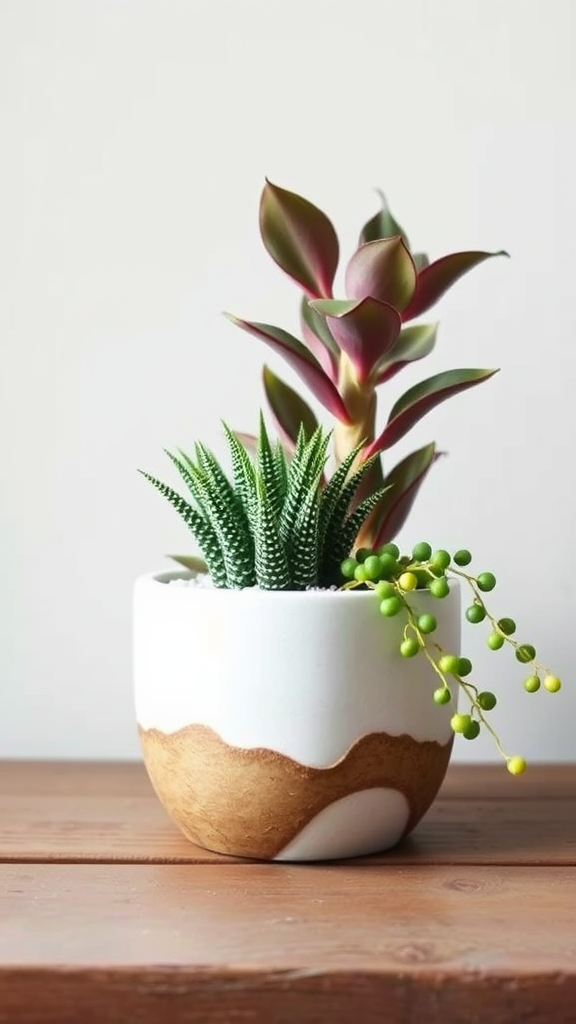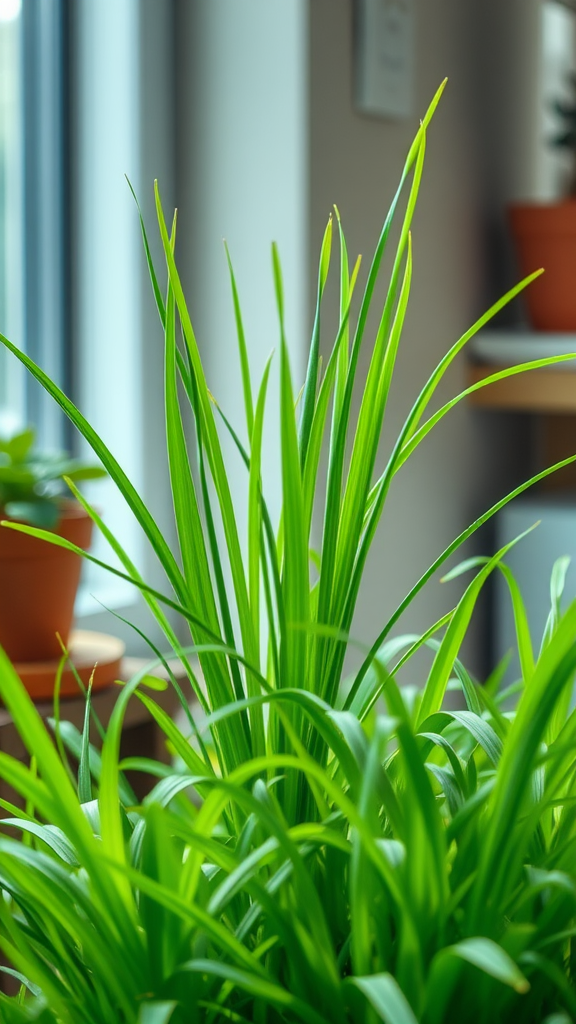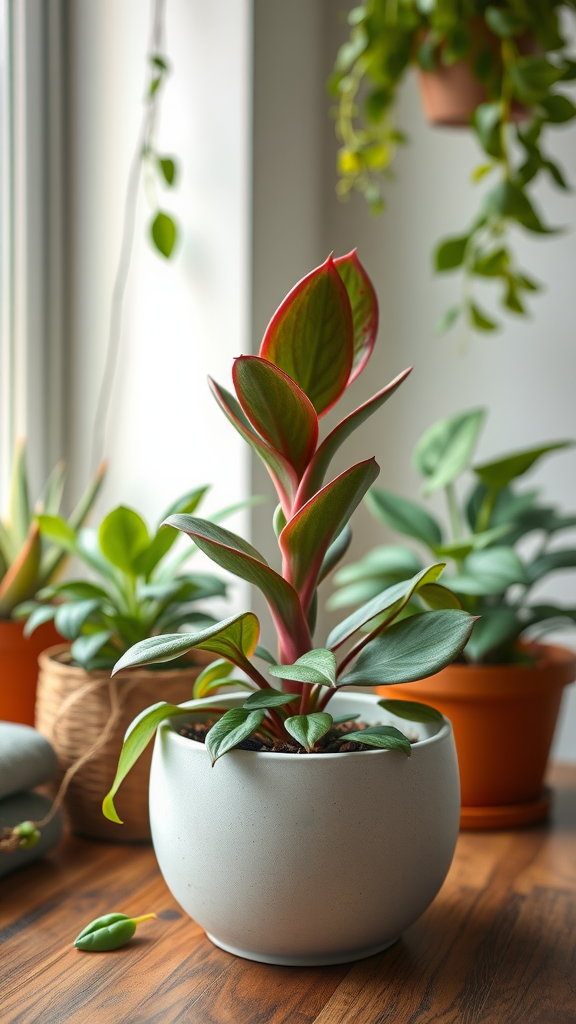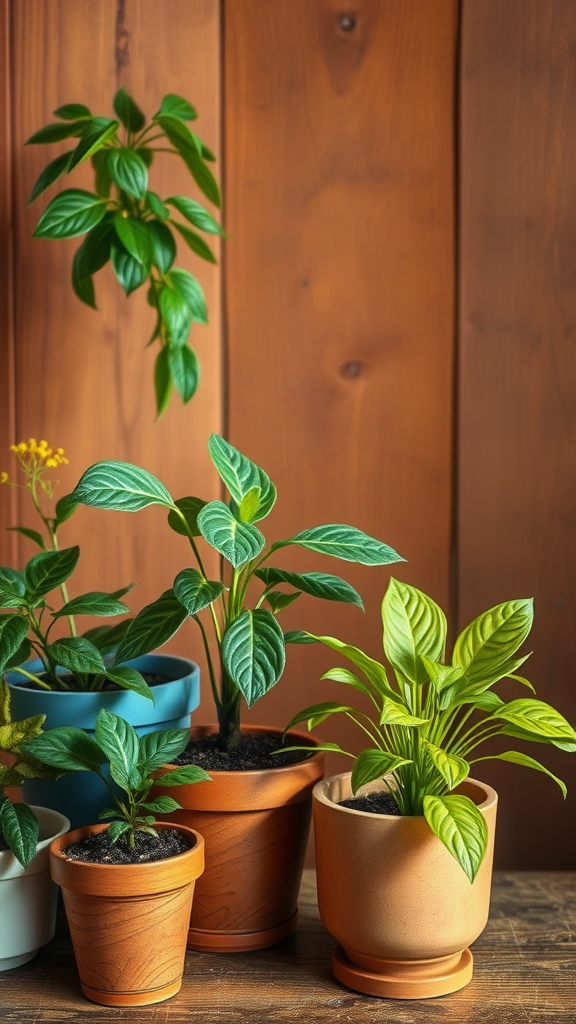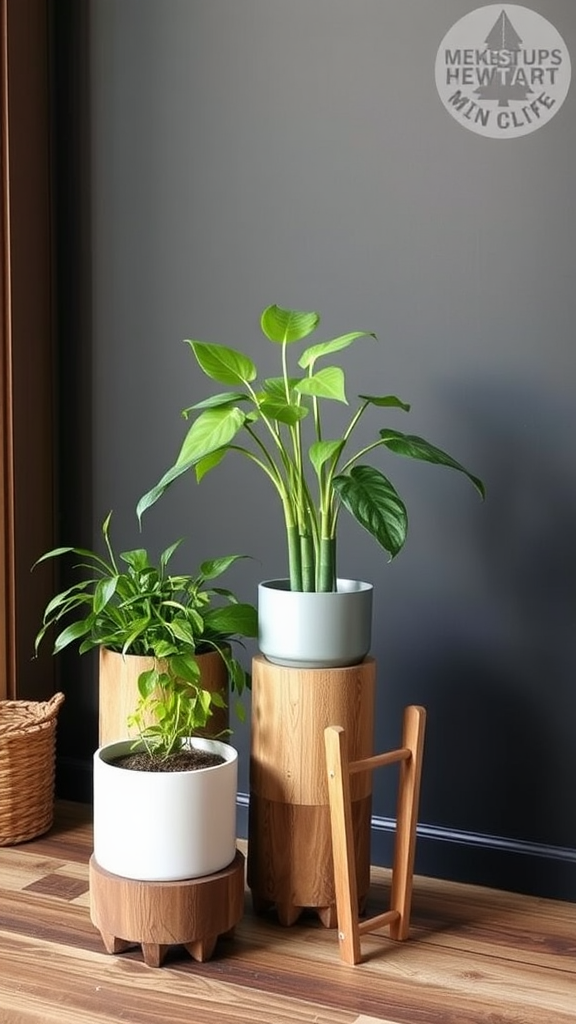Creative and Fun DIY Planter Ideas for Every Space
If you’re looking to add a splash of creativity to your home or garden, trying out some DIY planter ideas can be a rewarding experience. Not only do these DIY projects elevate the aesthetic of your space, but they also offer a personalized touch to your indoor and outdoor gardens. Here are some inventive planter ideas designed to inspire you!
1. Wooden Pallet Planters
Wooden pallets are versatile and can be transformed into stunning planter boxes with minimal effort. Start by cutting the pallet in half, and then fix the bottom so it can hold soil. You can paint or stain it for a more polished look. Stack multiple pallets for a tiered effect to draw the eye upwards!
2. Upcycled Fabric Planters
Old fabric can become the foundation of charming, soft planters. Use sturdy fabrics like burlap or canvas. Cut the fabric into squares, stitch up the sides, and fill them with soil. You can hang these fabric planters using strings or place them on shelves for a colorful pop!
3. Hanging Teacup Planters
Old teacups can add a whimsical touch to your garden. Drill a small hole at the bottom for drainage, then fill the cup with soil and your favorite small plants. You can hang these cups from a tree branch or display them on a tea stand for a unique décor element!
4. Mason Jar Herb Gardens
These simple yet effective planters make great use of glass jars. Fill them with soil and your chosen herbs. Attach a small label to each jar so you can easily identify your plants. These jars can be placed on windowsills to catch the sunlight and are perfect for kitchen use!
5. Cinder Block Planters
Cinder blocks are both affordable and sturdy, ideal for a DIY project. Arrange them in a creative layout in your garden and fill the holes with your chosen plants. You can even paint the blocks for added character, allowing them to blend or stand out against your garden.
6. Vintage Ladder Planter
Transform an old wooden ladder into a stylish vertical planter. Lean it against a wall or place it in the corner of your garden. Use each rung to place pots or baskets filled with flowers. This project not only saves space but becomes a beautiful focal point in your garden.
7. Tire Planters
Old tires can become fantastic planters with a little creativity. Clean them up and consider painting them in bright colors to add cheer to your outdoor space. Stack them or arrange them side by side, and fill them with soil and vibrant plants or flowers.
8. Concrete Block Planters
Concrete blocks can be an excellent option for more modern and robust planter designs. Create a rectangular shape using blocks and fill it with soil. These planters can also be designed to include benches or seating areas, integrating function with aesthetics.
9. Wine Barrel Planters
If you have an old wine barrel, it can add rustic charm to your garden. Cut it in half or leave it whole for a dramatic effect. Fill it with flowers, vegetables, or herbs to create a stunning centerpiece. You can even paint it to match your outdoor décor.
10. Colander Planters
Your old colander can serve a new purpose as a unique planter. The holes in the bottom ensure excellent drainage for your plants. Fill it with potting mix and your choice of plants, and you can hang it or place it on a tabletop for a quirky decorative piece!
These DIY planter ideas cater to different styles and spaces. Whether you have a large garden or just a small window ledge, there’s a planter design for every environment. Putting these creative projects into action not only beautifies your space but also gives you a wonderful hobby that nurtures your love for plants. So gather your materials and start planting today!
Tips for Choosing the Right Plants to Pair with Your Unique Planters
Choosing the right plants to showcase in your unique planters can elevate the way your home or garden looks. It’s more than just picking any plant; the right pairing can create a balanced aesthetic that complements both the plant and the planter. Let’s dive into how to make the best choices for your green companions.
Consider the Size of the Planter
The first step in selecting the perfect plant is to look at the size of your planter. A large planter can potentially carry bigger plants, while smaller pots might be ideal for delicate flowers or compact varieties. Here are some size considerations:
- For small planters, consider plants like succulents or herbs, which have root systems that won’t outgrow their space easily.
- Medium-sized planters can host a variety of flowers like petunias or marigolds, providing a burst of color without overwhelming the setup.
- In large planters, consider small shrubs or larger flowering plants like hibiscus that can create a focal point in your space.
Think About Light Requirements
Understanding the light needs of your plants is crucial. Ensure the plants you choose can thrive in the light conditions of the environment where you’ll be placing them:
- If you have bright, sunny spots, opt for sun-loving plants like aloe vera or lavender.
- For shadier areas, consider shade-loving varieties like ferns or snake plants, which require less direct sunlight.
- Medium light conditions can accommodate a range of plants, such as pothos or peace lilies, offering versatility in your choices.
Match Colors and Textures
The visual appeal of your planters can be greatly enhanced by choosing plants that contrast or compliment the planter’s colors and textures:
- For example, a rustic wooden planter can be paired beautifully with vibrant flowers like petunias or geraniums.
- Modern ceramic pots often look good with sleek, green foliage such as succulents or snake plants.
- Mixing textures can also create intrigue. Add a spiky plant next to a cascading one for artistic flair.
Container Drainage and Plant Health
Good drainage is vital for plant health. Ensure that the planters you choose have holes at the bottom to help excess water escape. This keeps roots from drowning. Consider the following types of planters:
- Clay pots allow good airflow and moisture loss, which is ideal for drought-resistant plants.
- Plastic planters retain moisture longer and are suitable for plants that prefer a wetter environment.
- Self-watering containers can be beneficial for busy plant parents as they reduce maintenance and ensure consistent hydration.
Seasonal Considerations
Different seasons can affect plant suitability as well. Here are seasonal tips:
- In spring and summer, choose flowering plants that will bloom brightly during the warmer months. Think of geraniums or marigolds.
- For fall, consider ornamental grasses or mums that align with autumn tones.
- In winter, use evergreen plants to keep your display vibrant, like rosemary or pine.
Personal Style and Themed Arrangements
Your personal style should shine through in your plant choices. Think about these aspects:
- Follow a color palette that matches your home decor for a cohesive look.
- Consider themes like tropical, desert, or cottage garden to inspire plant arrangements.
- Mixing different types of plants, such as combining flowers with herbs or foliage, adds depth and interest.
Ultimately, choosing plants that fit your unique planters is not just about aesthetics; it’s also about ensuring plants thrive in their environment. Think about size, light, color, drainage, and seasonal changes. Most importantly, let your creativity and personal style guide you in crafting your perfect botanical display. With these tools, you can confidently select plants that not only look great but also add life to your living spaces.
Conclusion
Finding the perfect planter for your plants can transform your living space into a vibrant, inviting oasis. By incorporating creative and fun DIY planter ideas, you can easily showcase your personality and style. Whether you choose to repurpose old items or create something entirely new, the possibilities are endless. Each DIY planter not only enhances your décor but also serves as a delightful conversation starter.
Selecting the right plants plays a key role in maximizing the beauty of your unique planters. Consider the size and shape of your DIY creations when choosing plants. For smaller planters, opt for succulents or small herbs that won’t overpower the container. Larger planters can accommodate bigger foliage, like tropical plants or small shrubs, which will bring a lush feel to your space. Always think about factors like sunlight, water needs, and climate to ensure your plants thrive in their new homes.
As you embark on your DIY planter journey, remember that creating them is just as rewarding as watching your plants grow. Take your time to explore different materials and designs, ensuring they not only suit your aesthetic preferences but also meet the needs of the plants you love. With a little creativity and care, your DIY planters will become not just functional items, but also beautiful works of art that brighten your home and environment. So roll up your sleeves, get crafting, and let your plants shine in their creative new displays!

